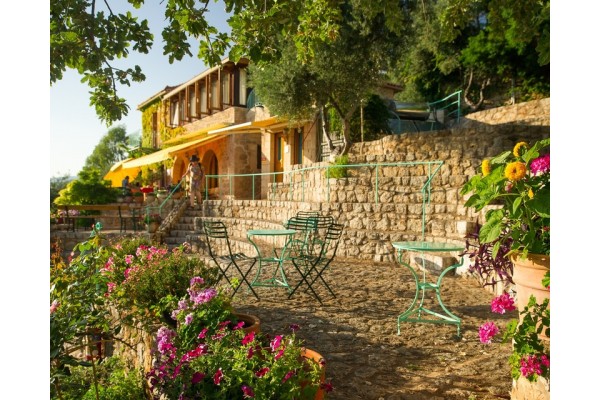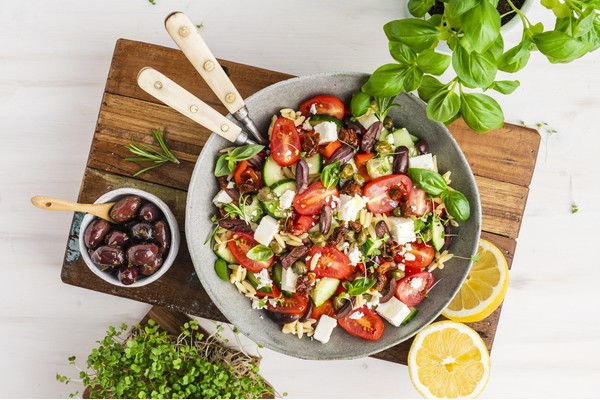Olive oil is often praised as the heart of Mediterranean cuisine. But olive oil is not just olive oil. And it is not always clear what the olive oil connoisseur should look out for in order to get real quality in the salad bowl or in the saucepan . Which olive oil is better: cold-pressed or cold extracted?
How is extra virgin olive oil made?
In the production process of cold-pressed olive oil, the course is set early on with the expert cultivation of the olives. The strong growth of the olive trees and their fruit later determines the quality of the olive oil . The mineral content of the soil and the intensity of solar radiation play an important role. This applies in particular to organic cultivation, in which artificial fertilizers and pesticides are not used. That is why there are many successful growing regions in the Mediterranean region, which is characterized by a Mediterranean climate and numerous hours of hot sunshine.

Gentle harvesting is important in both cold-pressed and cold-extracted production.
After around 6 to 8 months of ripening , the olives are ready for processing and the harvest season can begin. Sometimes it is still traditionally harvested by hand; Depending on the size of the cultivation area and the quality requirements of the manufacturer, however, industrial harvesting machines are also used. Freshly harvested, the drupes are cleaned and freed from leaves and twigs in order to process them on the same day.
With the help of stones or stainless steel mills, the whole fruits, including their pits, are now crushed into a green-brown mass . The resulting juicy olive pulp is spread on press mats made of raffia or nylon. In the next step, the mats are stacked on top of each other and pressed together with hydraulic pressure. Amniotic fluid also escapes along with the coveted olive oil. This mixture is first collected. In order to subsequently obtain pure oil, the two liquid components must now be separated from one another. This is what happens during decanting: during a longer period of rest, the lighter oil settles in a layer above the water and can easily be skimmed off.
In the traditional history of olive oil production, the cold pressing method was used in small oil mills for many years. But real olive oil experts have noticed a certain shortcoming of the process: the olive mass in the press mats and the liquid squeezed out are in permanent contact with the fresh air. Therefore, oxidation reactions inevitably occur. These unpleasant reactions with the oxygen reduce the quality of the valuable oil. Natural freshness, full aroma and healthy ingredients are lost unnecessarily.
What does cold extracted olive oil mean?
MANI uses the cold extraction method to produce the native organic olive oils . Just as with cold pressing, expert cultivation and careful harvesting of the olives form the basis for the production of high-quality oil. After all, the quality of the fruit sets the standard for the oil. When harvest time arrives on the Mani peninsula, tightly meshed nets are spread under the olive trees on the sun-drenched slopes of southern Greece. In the spirit of organic cultivation, the stone fruits are carefully picked by hand or shaken from the trees with the help of rakes and shaking sticks. Then hurry is required - because only if the olives are processed as quickly as possible can the full-bodied, fresh aroma be preserved.

At MANI, the olives are largely sorted by hand.
Important: In order to avoid contact with oxygen as much as possible, the entire cold extraction takes place in a closed system. This minimizes oxidation and ensures the quality of cold-extracted MANI olive oil.
Arriving at the oil mill, the olives are first cleaned. Just as with cold pressing, the olives are then crushed into a viscous mass. A stainless steel mill or heavy stones are usually used for this.
The olive pulp is now poured into a centrifuge that rotates at high speed. Solid and liquid components are separated from each other by the rotary movement. Instead of being "squeezed out", the olive oil is "ejected" from the fruit pulp during cold extraction.
After the first spin cycle, the oil is still mixed with the amniotic fluid that has escaped. For the extraction of pure olive oil - the declared goal behind the whole process - centrifugation is carried out in a second run.
This is followed by a rest period of several days for the cold-extracted olive oil. Suspended matter in the oil settles during this time and can then be removed. After a final filtering, the production of the MANI virgin olive oil in raw food quality is complete.
Good to know: The entire production process of the cold-extracted olive oil is designed to preserve the natural ingredients. This creates an oil with a full and round aroma. In order to preserve this even after bottling, we recommend storing it at 10 °C to 20 °C, protected from light and heat.
EU regulation and conclusion
"Cold-pressed" has long been considered a first-class quality feature for high-quality olive oil. From today's perspective, however, this is outdated. Since cold-extracted olive oil is obtained in a closed system, it can be produced at an incomparably high level free from the influence of oxygen - which is noticeable in both the taste and the ingredients.
Olive oil buyer in Austria and Germany can rely on a correct declaration of the production process. According to Article 5 of the EU Implementing Regulation No. 29/2012, the use of the terms "cold extraction" and "first cold pressing" on the labels of olive oils is subject to strict regulations. If it says "cold extraction" on it, it also contains cold-extracted olive oil!
For both processes, the EU regulation stipulates that virgin or extra virgin olive oil is involved acts.
In addition, the EU regulation also defines the key difference between the two procedures. If an olive oil label says “first cold pressing”, then it was “obtained in a traditional hydraulic press extraction system”. However, when the indication “cold extraction” is used, as is the case with MANI extra virgin olive oils, the oil was produced “by percolation or centrifugation of the olive mass”.
FAQ
Is extra virgin olive oil always cold pressed?
"Native" means "natural". Therefore, only oils that are obtained in mechanical processes without the addition of chemicals may be called natural or native olive oils. This applies to cold-pressed olive oils and of course also to the even more gently produced cold-extracted olive oils.
Difference between extra virgin olive oil and refined olive oil
Refined olive oil is obtained in a chemical production process using temperatures up to 200 °C. The purely mechanical process of cold pressing at a maximum of 27 °C is gentler. That is why cold-pressed olive oil is much richer in natural and healthy ingredients. Refined olive oil, on the other hand, has the advantage that it is suitable for heating to higher temperatures.
Is extra virgin olive oil suitable for frying?
Cold-pressed olive oil is suitable for cooking, frying and baking. However, as with all fats and oils, it is important not to exceed the smoke point. The smoke point is the temperature at which the "liquid" elements of the oil begin to evaporate. With (extra) virgin olive oil, this happens from around 180 °C. It should therefore not be heated any higher.



















